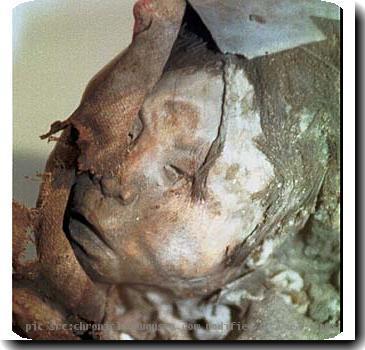Egyptian mummies show heart disease had ancient origin
By IANSWednesday, November 18, 2009
WASHINGTON - Hardening of arteries detected in Egyptian mummies as early as 3,500 years shows that heart attacks and strokes had ancient origins.
“Atherosclerosis… despite differences in ancient and modern lifestyles… was rather common in ancient Egyptians of high socio-economic status living as much as three millennia ago,” says Gregory Thomas, co-principal investigator.
“The findings suggest that we may have to look beyond modern risk factors to fully understand the disease,” says Thomas, University of California-Irvine (UC-I) professor of cardiology.
The nameplate of the Pharaoh Merenptah (c. 1213-1203 BC) at the Museum of Egyptian Antiquities reads that when he died at approximately age 60 he was afflicted with atherosclerosis, arthritis and dental decay.
Thomas and a team of US and Egyptian cardiologists, joined by experts in Egyptology and preservation, selected 20 mummies on display for scanning on a Siemens 6 slice CT scanner during February this year.
Researchers found that nine of the 16 mummies had identifiable arteries or hearts left in their bodies after the mummification process had calcification either clearly seen in the wall of the artery or in the path where the artery should have been. Some mummies had calcification in up to six different arteries.
Using skeletal analysis, the Egyptology and preservationist team was able to estimate the age at death for all the mummies and the names and occupations in the majority.
Of the mummies who had died when they were older than 45, seven of eight had calcification and thus atherosclerosis while only two of eight of those dying at an earlier age had calcification.
Atherosclerosis did not spare women; vascular calcifications were observed in both male and female mummies, said a UC-I release.
The most ancient Egyptian afflicted with atherosclerosis was Lady Rai, who lived to an estimated age of 30 to 40 years around 1530 BC and had been the nursemaid to Queen Ahmose Nefertiri.
Lady Rai lived about 300 years prior to the time of Moses and 200 prior to King Tutankhamun (Tut).
These findings appeared in the Wednesday issue of the Journal of the American Medical Association (JAMA).

